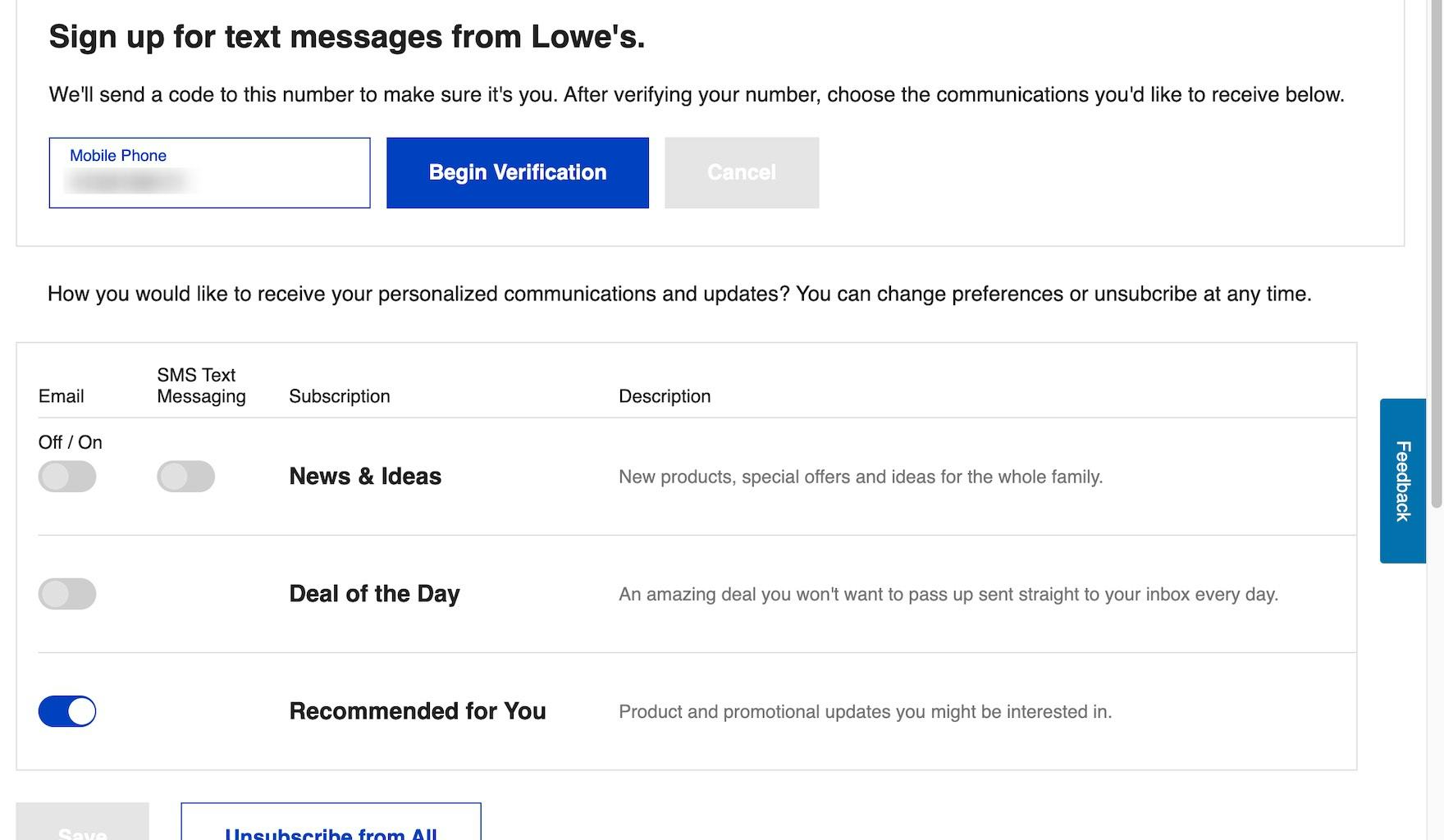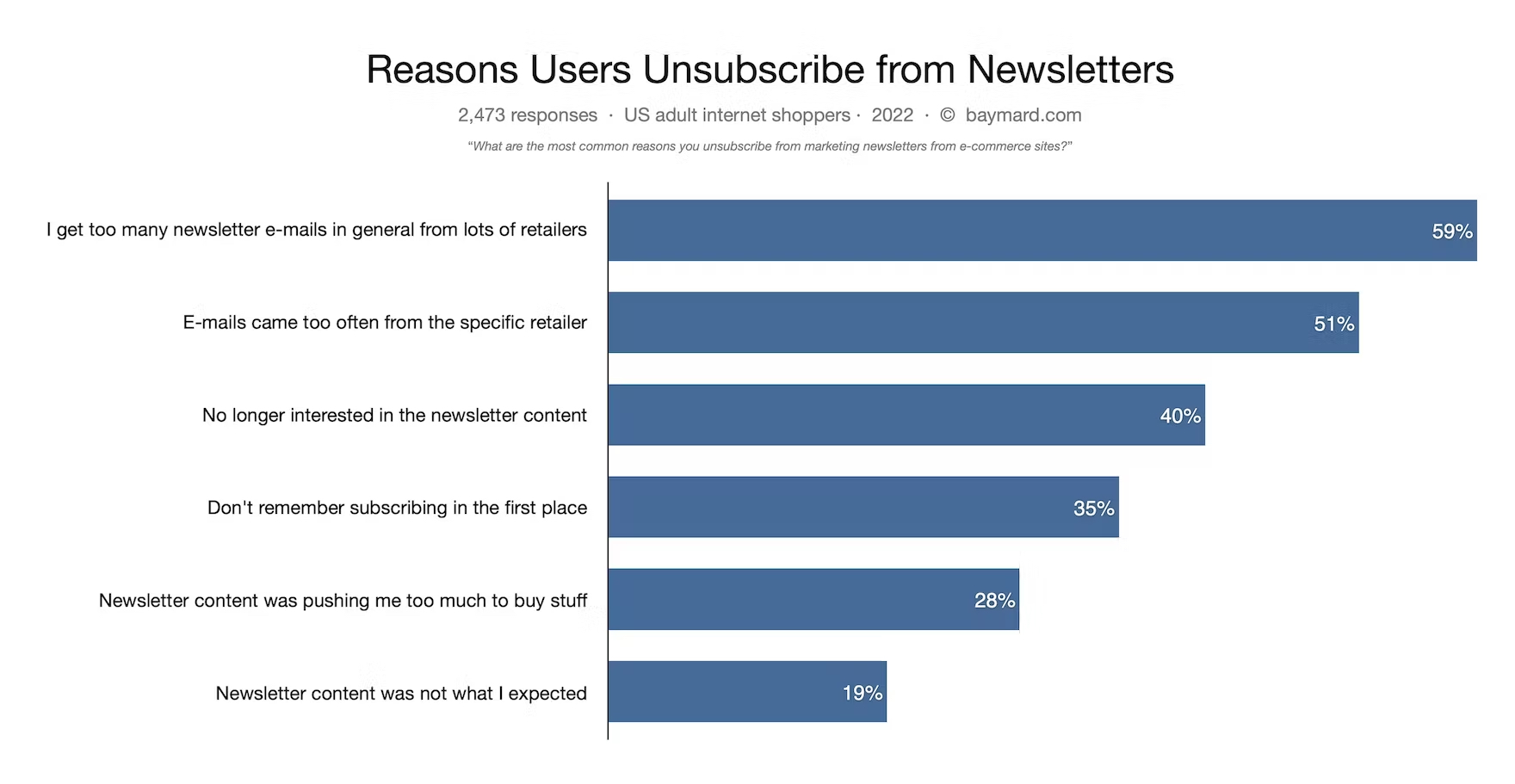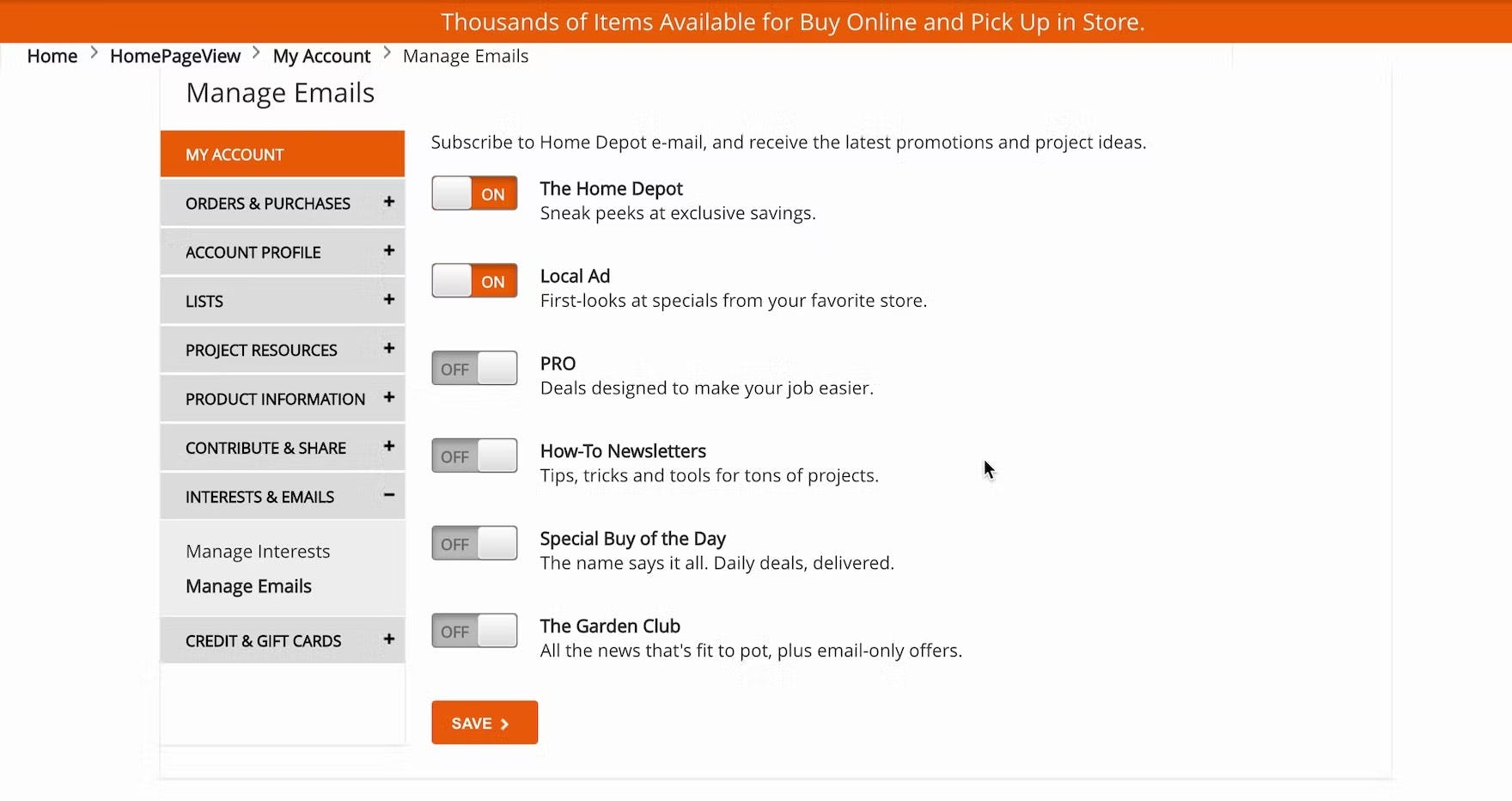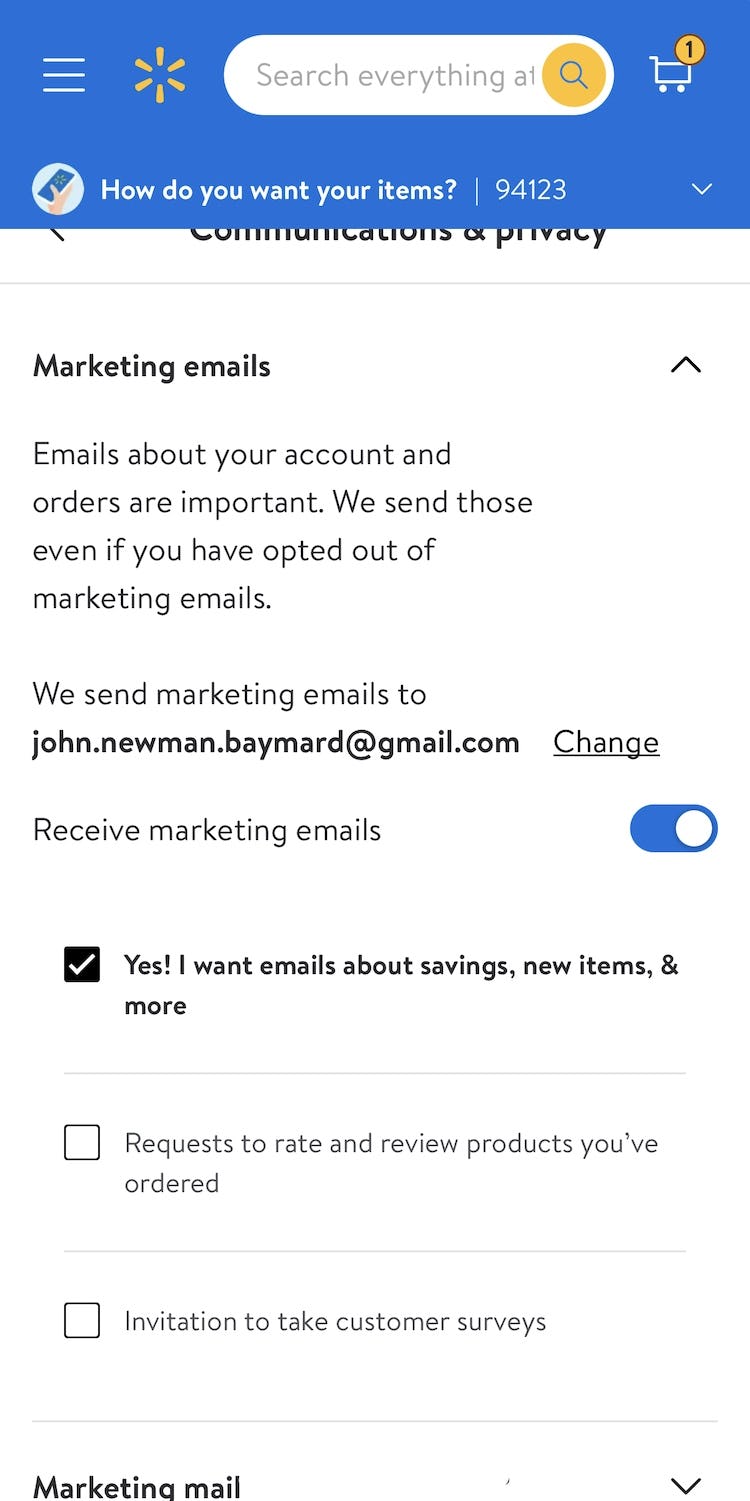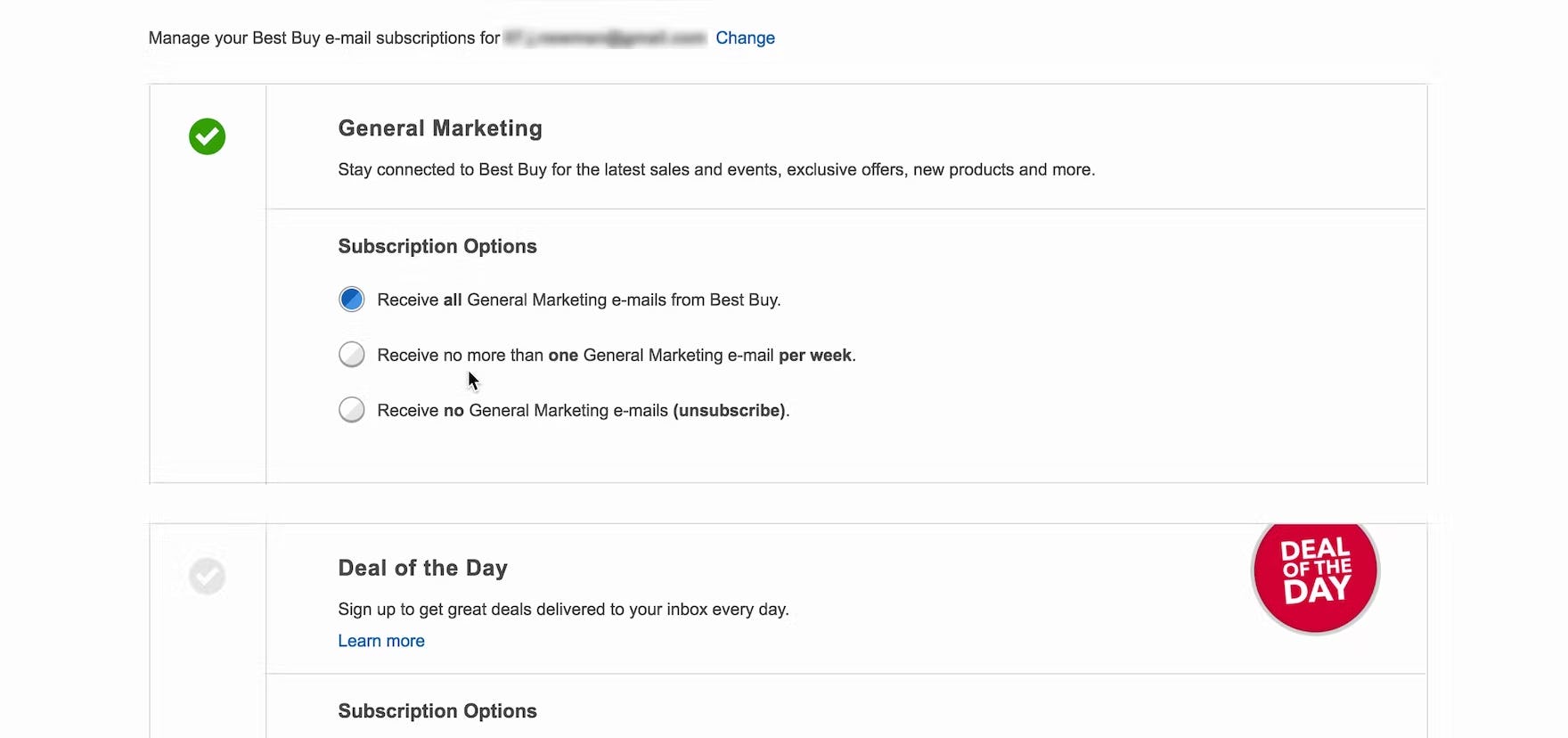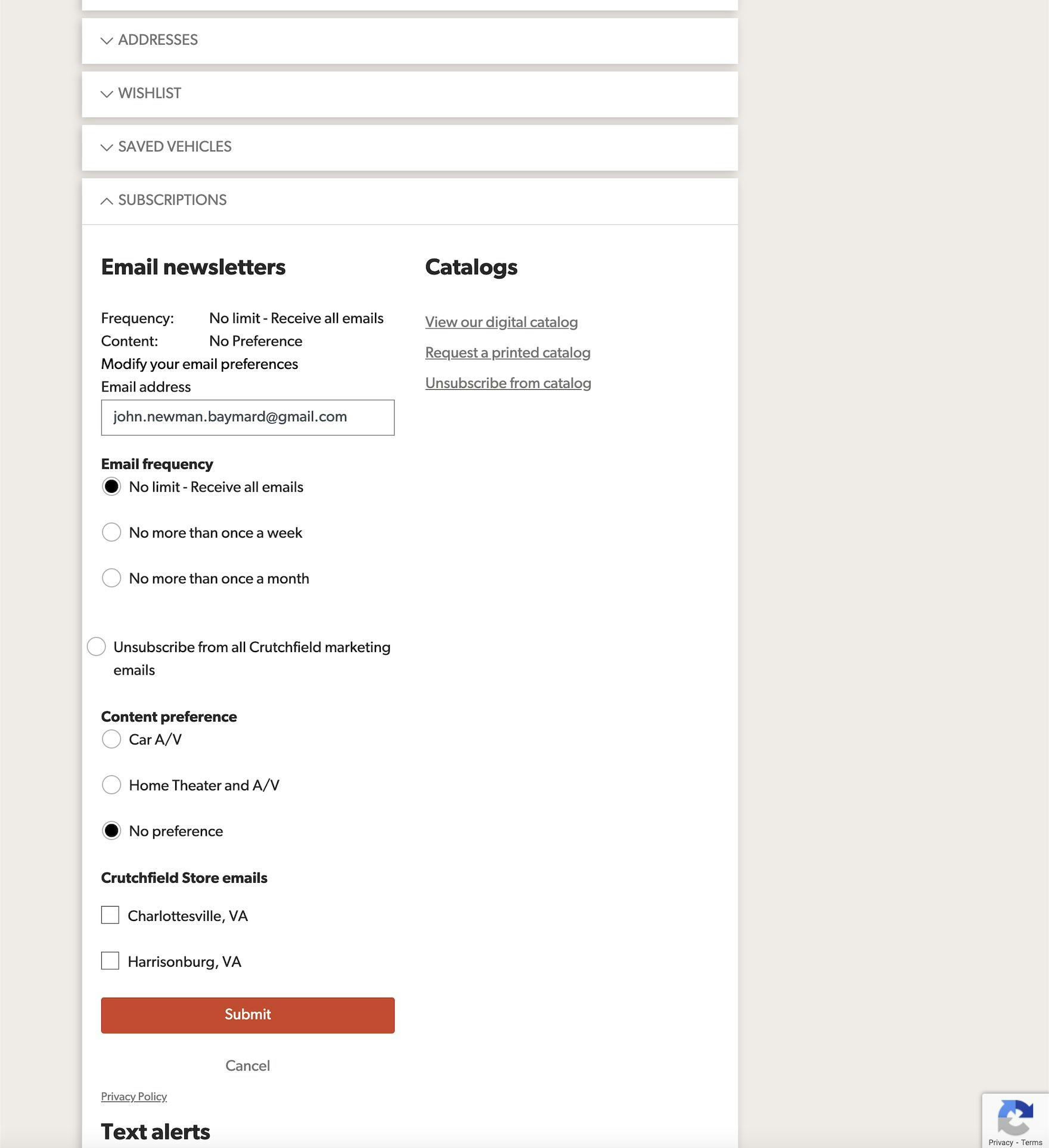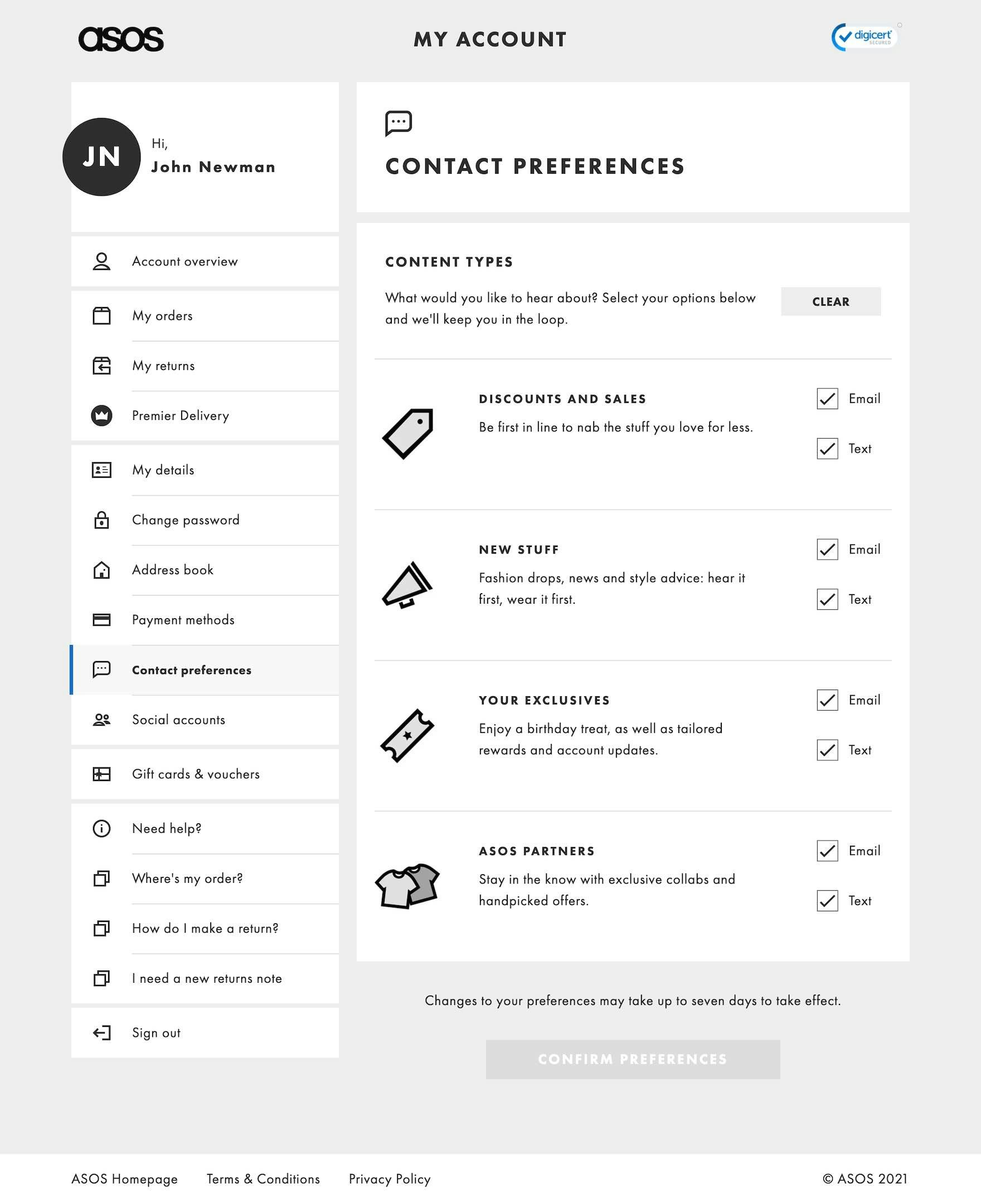Key Takeaways
- A subgroup of users are interested in receiving sites’ email communications
- Yet if presented with a stark “receive all / receive none” choice, many will opt out of emails to avoid becoming overwhelmed
- Allowing users to select a frequency of emails can help retain users who would otherwise unsubscribe
For many sites, newsletter communications are an important part of their communication strategy with users.
Additionally, a subgroup of users welcome receiving communications from sites, as the emails often provide information on savings, new items, and other important information.
Yet newsletters can quickly become overwhelming for users and, as a result, some will simply “unsubscribe” to avoid getting too many emails.
However, our large-scale testing revealed that allowing users to specify the frequency with which they receive newsletters can meet the needs of users, who want to avoid receiving too many emails, as well as sites, who want to remain in communication with users.
Yet our e-commerce UX benchmark shows that 80% of sites don’t allow users to adjust the frequency of newsletter emails — prompting many users to simply opt out entirely from newsletter communications.
In this article, we’ll discuss our Premium research findings regarding newsletter email frequency:
- Our quantitative results on “Reasons Why Users Unsubscribe from Emails”
- Our qualitative findings from large-scale testing of user accounts
- How to ensure users have options when it comes to newsletter frequency
Why Users Unsubscribe from Emails (Quantitative Findings)
Our survey of 2,473 US adult internet shoppers lists the top reasons why users unsubscribe from site emails.
The top reason why users unsubscribe from newsletter emails — or don’t sign up in the first place — is that 59% of users feel they receive too many newsletter and emails in general.
This group of users may be hard to attract when it comes to encouraging them to sign up for newsletters, as they’ve already developed a distinct dislike of receiving newsletter communications from e-commerce sites.
However, our survey indicates that the second-most cited reason why users unsubscribe from emails is that “Emails come too often from a specific retailer” (51%).
This group of users could potentially be enticed to keep receiving newsletters — if they’re provided with some control over how often they’ll receive the emails, as our large-scale testing confirmed.
Why Users Unsubscribe from Emails (Qualitative Findings)
“‘First-looks at specials from your favorite store’, I’d want that but where does it say the frequency of it? Because sometimes they could have specials every day.” Some test participants noted the lack of options to adjust the frequency of emails on Home Depot. Another worried, “Not all of them say the frequency of the email, which is an important factor for my consideration”.
During testing, while most participants weren’t interested in signing up for email communications, a subgroup indicated that they would like to receive newsletters.
The reasons users decide they’d like to receive newsletters are varied, but participants in testing often cited the opportunity to receive coupons or notifications regarding deals or special offers, new products, or product guides.
Yet many sites in testing presented email newsletters as an “either/or” choice: either users opt to receive all communications or they opt to receive no communications.
Unsurprisingly, users presented with such a choice will often choose “none”, as the risk of becoming overwhelmed with emails from a site outweighs the potential benefits of receiving useful information from a site.
How to Ensure Users Have Options When It Comes to Newsletter Frequency
“I do like that they have options, ‘no more than one per week’, that’s a good one.” When viewing unsubscribe options on Best Buy, participants appreciated the option to “Receive no more than one General Marketing email per week” as opposed to facing a simple all or nothing decision.
Instead of offering users an “all or nothing” choice, sites should allow users to choose the frequency with which they receive newsletters and other marketing communications.
Having an option to tweak the frequency is a reasonable compromise and helps to ensure some users remain subscribed or, if the choice is presented at sign-up, that they subscribe in the first place.
“Oh, there you go — ‘Too Many Emails?’…on this page I don’t see an option to go to one per month” On Nordstrom, while users are offered to set a frequency of once per week, this participant was looking to set a frequency of once per month.
However, when deciding what frequency of email is right for users, there is no “one size fits all”.
It depends on factors such as the newsletter participant matter (articles versus sales and ads for products), the personal preferences of users, how relevant the emails are for the individual user, how many other emails and newsletters they are already getting from other companies, etc.
As one participant said during testing, “As a consumer I’d like to see no more than 2 per week or 2 per month, that kind of thing”, while another remarked, “Anything that seems repetitive, or getting multiple things from the same company, in the same day. Or getting more than 3 emails in a week. I think that’s a lot”.
At L.L. Bean (first image) and Crutchfield (second image), users are allowed to adjust how often they receive newsletters. Additionally, users are able to set a content preference (e.g., “Men’s”, “Women’s”, “Kid’s”; or “Car A/V”, “Home Theater and A/V”), which helps tailor communications even more to an individual user’s interests.
As users’ individual preferences vary, consider allowing them to choose from a range of frequencies — for example, “twice a week”, “weekly”, “every second week”, or “monthly” — so users can find a level of frequency that keeps them engaged without becoming so overwhelming that they unsubscribe entirely.
While the amount of frequency options that are feasible to offer is closely tied to how newsletters and content are created at the individual site, one general concept that works well for more manually curated newsletter content (guides, how-tos, etc.) is simply increasing the amount of content for low-frequency newsletters compared to high-frequency newsletters.
That way each newsletter frequency option will not need separate bespoke content.
For fully automated newsletters with mainly product suggestions, a more dynamic approach to differentiating what newsletter content each frequency setting actually gets will typically be more feasible.
Provide Users with Options for Selecting a Newsletter Frequency
While ASOS allows users to select the content they’d like to receive as newsletters, as well as to decide between email or text communications, there’s no option to choose a frequency of communications. This represents a missed opportunity, as some users who would otherwise be willing to receive emails at a reduced frequency will simply unsubscribe entirely instead.
When it comes to newsletter communications, a subgroup of users will be interested in receiving them — but only if they know they won’t be overwhelmed.
After all, a particular site’s newsletter may be only one of several that they receive.
Therefore, to avoid forcing users to make a choice between getting all the communications or getting none of the communications, offer users the ability to customize the frequency of newsletter communications.
Doing so will help to ensure that users are more likely to avoid opting out entirely from newsletters — yet 80% of sites don’t allow users to adjust the frequency of newsletters, causing many users to simply decide to unsubscribe.
This article presents the research findings from just 1 of the 650+ UX guidelines in Baymard Premium – get full access to learn how to create a “State of the Art” e-commerce user experience.
